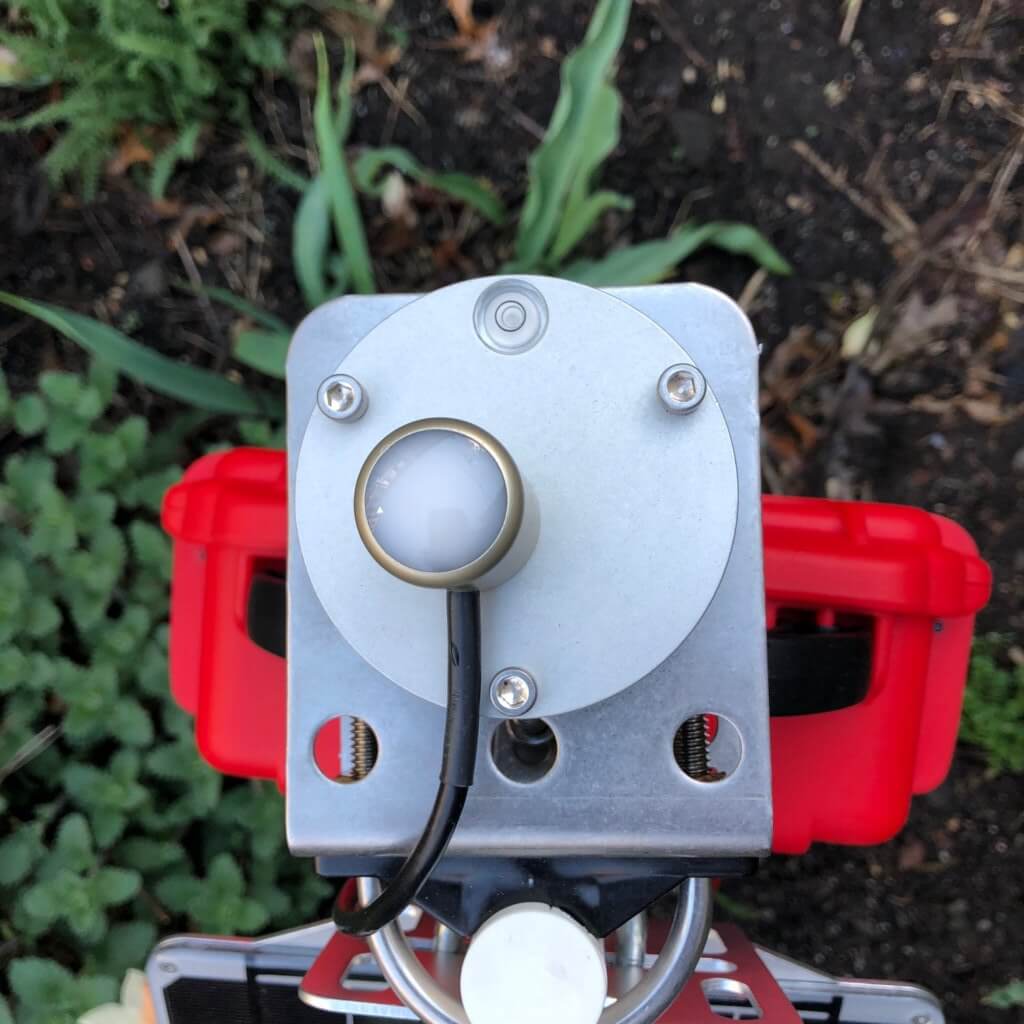In this post, we test how to run an Apogee full spectrum sensor from a small solar panel or simply a battery. The sensor measures PPFD which is the number of photons in the 400-700nm range of the visible spectrum – the spectrum plants use to grow. Their SQ-520 can be connected directly to a computer 5V USB charger and it will log up to 10,000 readings.
Apogee Sensor from a Solar Panel and Battery
Here is what seven days of readings look like in a backyard.
 |
The sensor consumes 52mA or 0.26 Watts continuously which amounts to 6.2 Watt hours a day. Most power banks shut off at this current level, but the Voltaic batteries have an Always On function which keeps the output activated no matter the power draw.
The Setup
To power the system, we paired the 6 Watt panel with our V44 USB battery. In unshaded conditions, the panel should provide sufficient power throughout the year. The battery will run the logger for 6-7 days without any sun. Having the buffer allows the system to continue running during multiple days of heavy cloud cover.
We placed the battery in a waterproof Nanuk case.

Case, sensor and solar panel were all mounted on a pole. The panel attached via our universal bracket and the sensor via Apogee’s Solar Sensor Leveling Plate.

The plate has a handy level that allows you to know when it is pointing straight up.

Data Logging Results
The system powered by the 9 Watt panel and V44 ran for thirty days without interruption and did not appear to go much below 3/4 battery capacity. The limiting factor in the end was the 10,000 readings. We logged every 60 seconds which results in about seven days of readings. To store data over longer periods of time, be sure to reduce the logging rate to account for your desired time range.
Apogee Sensor from Battery Only
Across the US, Schuyler Smith conducted a similar experiment. He connected a SQ-520 sensor to the V44 battery on its own and placed the system in both the front yard and the backyard. Based on the results, he determined that the backyard was a better location for his garden bed. You can read the full post here on Apogee’s site.
The bottom line is that it is relatively straightforward to power the Apogee sensor off grid.


Leave a Reply